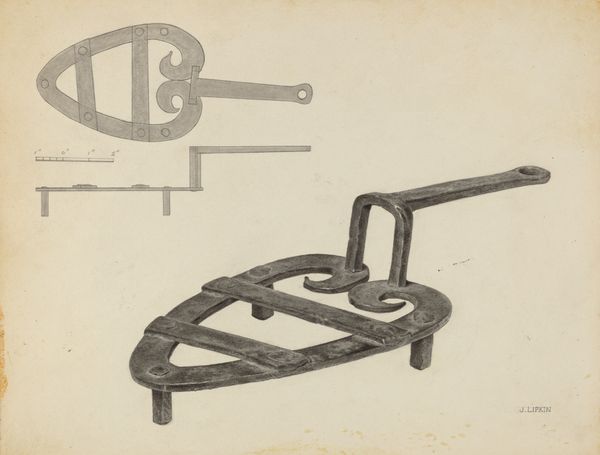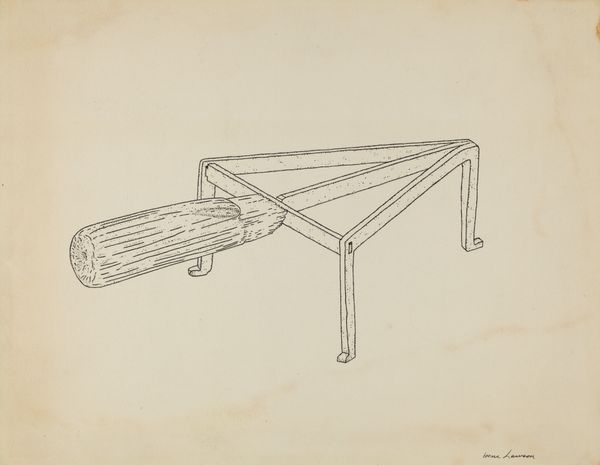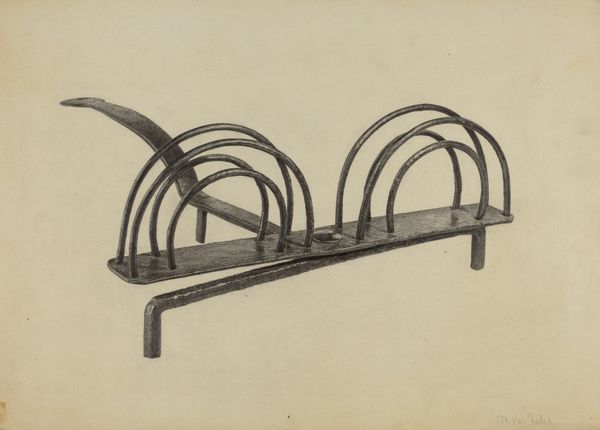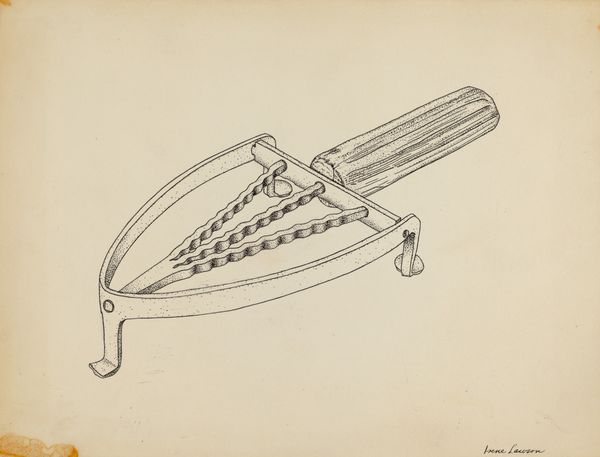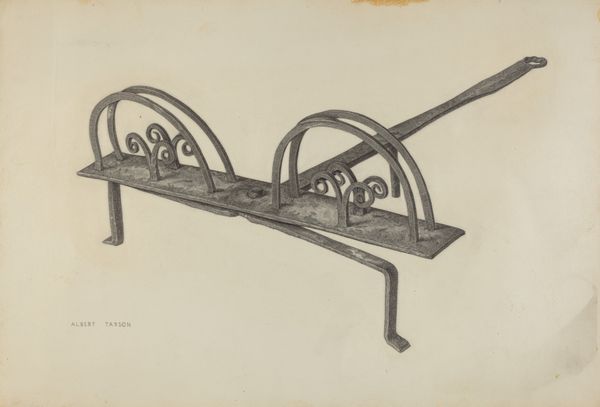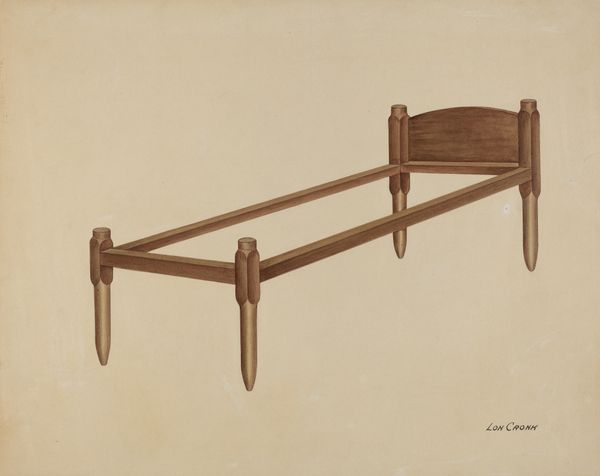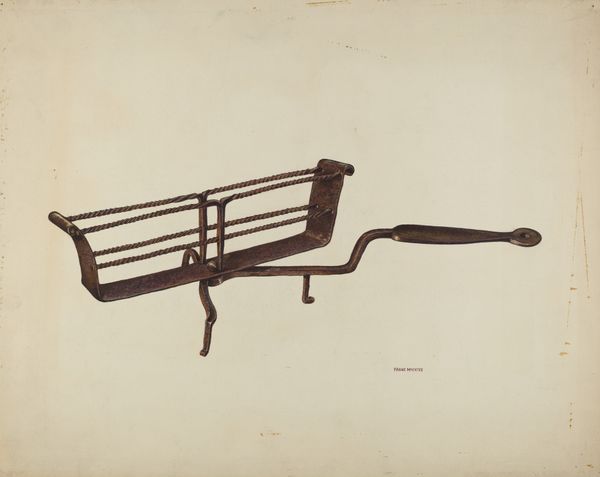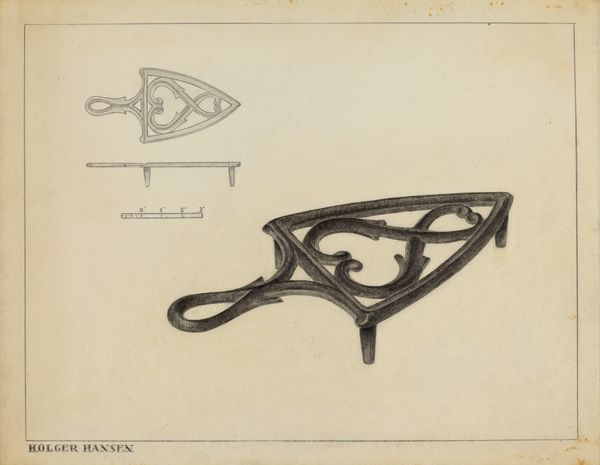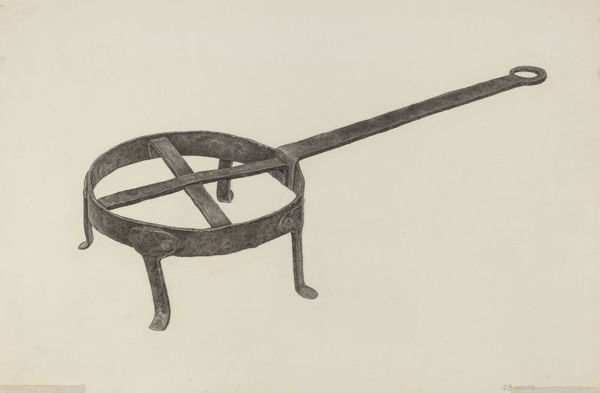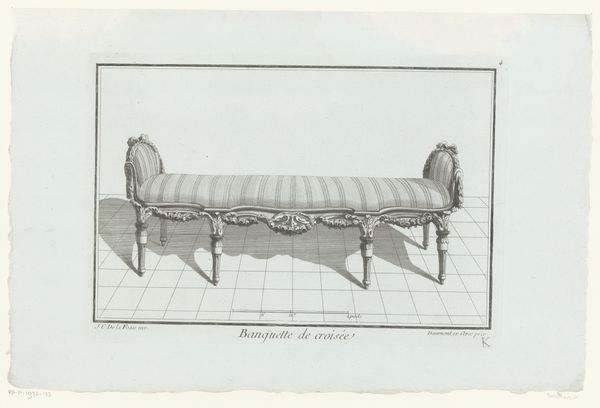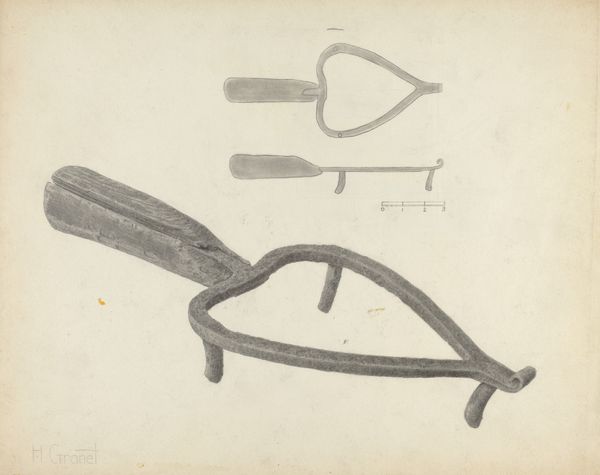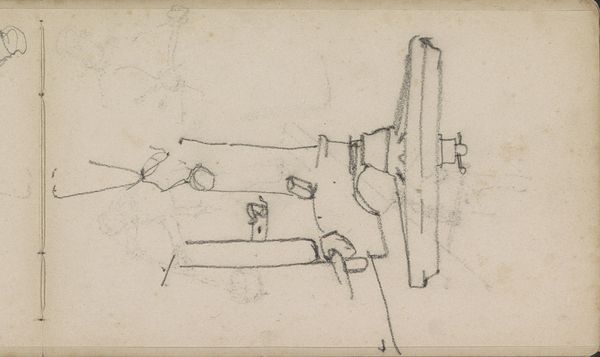
drawing, pencil
#
drawing
#
geometric
#
pencil
#
realism
Dimensions: overall: 22.8 x 29.3 cm (9 x 11 9/16 in.) Original IAD Object: 10 5/8" long; 4 1/8" wide; 2 1/4" high
Copyright: National Gallery of Art: CC0 1.0
Curator: Before us is a pencil drawing from around 1939 titled "Flat Iron Holder" by Lazar Rubinstein. I see geometrical forms with simple lines on an uncolored paper surface. What's your immediate take on it? Editor: It evokes a kind of austere functionality, doesn't it? The lines are clean, almost technical, but there’s also something quite somber in its muted palette. Curator: Absolutely. The flat iron holder, in its functionality, echoes domesticity. It holds a potential for transformation, for pressing fabrics. In this pencil rendering, the holder becomes an object of symbolic significance. Notice its repeated symmetry, lending it an order and harmony. Editor: Right, the drawing almost elevates this mundane object to the level of a design blueprint or some sort of forgotten prototype. You also see the hint of domestic labor. I wonder what Rubinstein was intending to express during the period in which the artist made it? Curator: Interesting point! This time aligns with a period where art started intertwining with the everyday more. The drawing shows visual lineage for future artists. It also echoes the cultural significance embedded in quotidian artifacts, revealing how these can express personal memories and communal identity. Editor: That reminds me how art helps us examine labor in its social and economic contexts, the gendered nature of ironing itself... I guess this tool is interesting when we consider all the bodies it impacts but it doesn’t necessarily touch directly. The drawing invites questions of value – whose work is visible and whose is not. Curator: It becomes a document of lost traditions of course, where an otherwise forgettable household tool gets permanently stored into history by being the subject of a detailed drawing. There is also a subtle melancholia that emanates from the choice of materials and shading in Rubinstein's rendition, a feeling that perhaps goes hand-in-hand with the object’s obsolescence. Editor: It is precisely this juxtaposition that ignites thought – recognizing social inequalities perpetuated through the labor embedded in everyday objects like this. Art creates the tools and dialogue for this type of understanding! Curator: Well said, its resonance stems not just from its realism but in revealing the enduring human connection to domestic symbolism. Editor: Agreed, uncovering beauty and inciting conversation. It underscores the significance of understanding labor as well as how identity and context play into interpreting what we may view as simple objects.
Comments
No comments
Be the first to comment and join the conversation on the ultimate creative platform.
